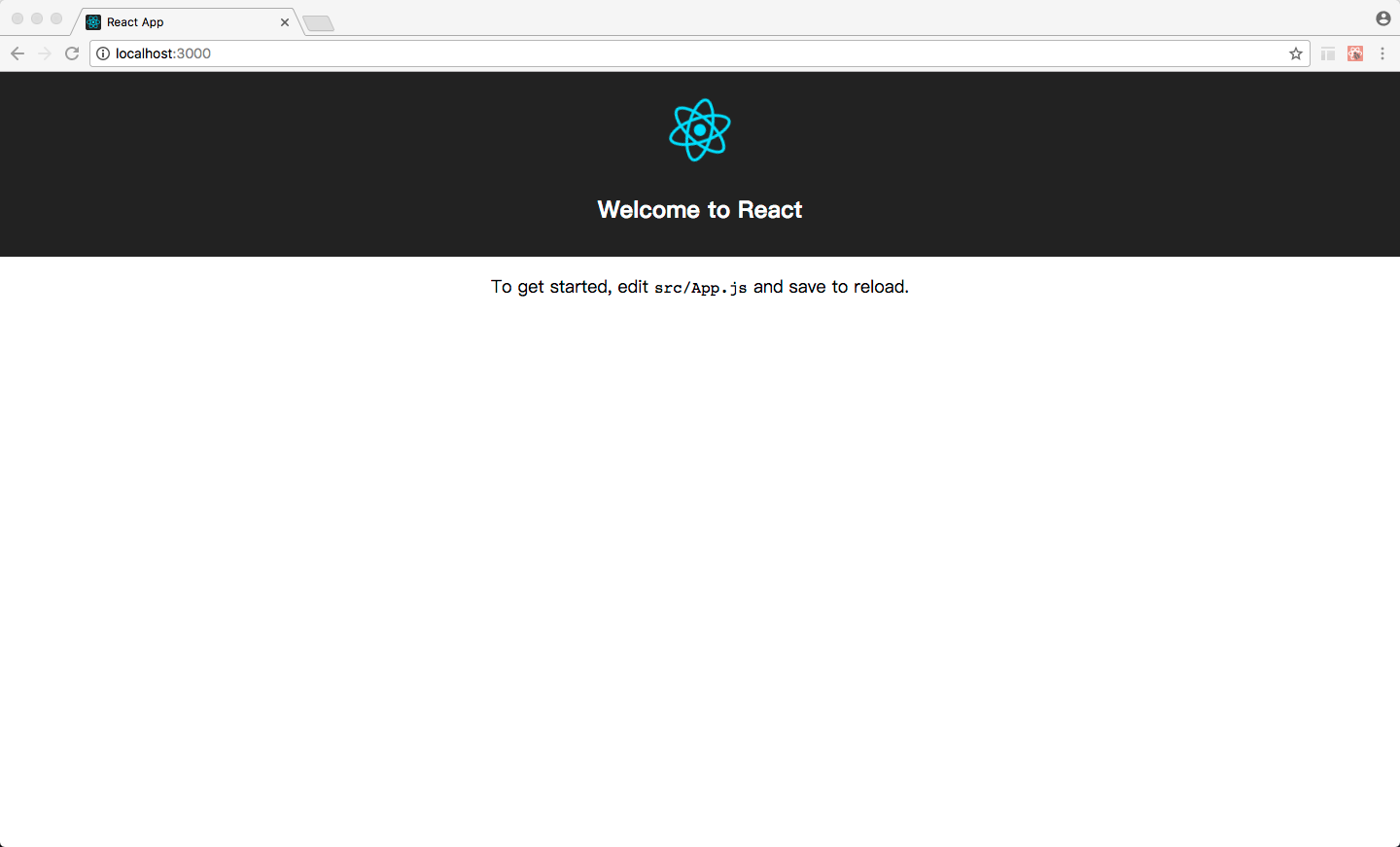您好,登录后才能下订单哦!
这篇文章给大家分享的是有关webpack如何构建react多页面应用的内容。小编觉得挺实用的,因此分享给大家做个参考,一起跟随小编过来看看吧。
利用creat-react-app 新建一个react应用
npm install -g create-react-app
然后创建一个项目
create-react-app demo
create-react-app会自动初始化一个脚手架并安装 React 项目的各种必要依赖,如果在过程中出现网络问题,请用cnpm淘宝镜像安装。
然后我们进入项目并启动。
cd demo
然后启动项目
npm start
那就会看到如下页面

然后进入src/App.js,用下面代码替换App.js中的代码(因为在webpack中暂时不想处理图片和icon)
import React, { Component } from 'react';
import './App.css';
class App extends Component {
render() {
return (
<div className="App">
<div className="App-header">
<h3>Welcome to App</h3>
</div>
<p className="App-intro">
To get started, edit <code>src/App.js</code> and save to reload.
</p>
</div>
);
}
}
export default App然后将 index.js 中的 内容替换为如下代码(删除registerServiceWorker)
import React from 'react';
import ReactDOM from 'react-dom';
import './index.css';
import App from './App';
ReactDOM.render(<App />, document.getElementById('root'));然后删除src下面的registerServiceWorker.js(该文件用于构建pwa应用用的,暂时我们用不了)和 logo.svg文件(不想处理图片文件)和 App.test.js(用于测试用的)。
现在src/下面有四个文件。接下来,在src下面新建两个文件夹 app1和 app2,分别将原来的四个文件拷贝进入app1和app2。文件目录如下:

接下来,进入public文件下,删除favicon.ico(不想处理)和 manifest.json(构建pwa用的),然后将index.html中的内容用如下内容替换
<!doctype html> <html lang="en"> <head> <meta charset="utf-8"> <meta name="viewport" content="width=device-width, initial-scale=1, shrink-to-fit=no"> <meta name="theme-color" content="#000000"> <title>React App</title> </head> <body> <noscript> You need to enable JavaScript to run this app. </noscript> <div id="root"></div> </body> </html>
这个index.html就是我们的模版html。
进入正题,开始install webpack和配置webpack
1.安装依赖。将package.json文件用下面的文件替代
{
"name": "demo",
"version": "0.1.0",
"private": true,
"dependencies": {
"react": "^15.6.1",
"react-dom": "^15.6.1"
},
"devDependencies": {
"babel-core": "^6.26.0",
"babel-loader": "^7.1.2",
"babel-preset-es2015": "^6.24.1",
"babel-preset-react": "^6.24.1",
"clean-webpack-plugin": "^0.1.16",
"css-loader": "^0.28.7",
"extract-text-webpack-plugin": "^3.0.0",
"file-loader": "^1.0.0",
"glob": "^7.1.2",
"html-webpack-plugin": "^2.30.1",
"postcss-loader": "^2.0.6",
"style-loader": "^0.18.2",
"url-loader": "^0.5.9",
"webpack": "^3.5.6",
"webpack-dev-server": "^2.8.1"
},
"scripts": {
"start": "webpack-dev-server --open",
"build": "webpack"
}
}2.删除当前目录中的node_modules,然后重新在控制台执行
npm i
3.在根目录下也就是/demo下新建一个webpack.config.js文件,写入如下代码
const webpack = require('webpack');
const glob = require('glob');
const path = require('path');
const HtmlWebpackPlugin = require('html-webpack-plugin');
const ExtractTextPlugin = require('extract-text-webpack-plugin');
const CleanWebpackPlugin = require('clean-webpack-plugin');
const webpackConfig = {
entry: {},
output:{
path:path.resolve(__dirname, './dist/'),
filename:'[name].[chunkhash:6].js'
},
//设置开发者工具的端口号,不设置则默认为8080端口
devServer: {
inline: true,
port: 8181
},
module:{
rules:[
{
test:/\.js?$/,
exclude:/node_modules/,
loader:'babel-loader',
query:{
presets:['es2015','react']
}
},
{
test: /\.(scss|sass|css)$/,
loader: ExtractTextPlugin.extract({fallback: "style-loader", use: "css-loader"})
},
]
},
plugins: [
new ExtractTextPlugin("[name].[chunkhash:6].css"),
new CleanWebpackPlugin(
['dist'],
{
root: __dirname,
verbose: true,
dry: false
}
)
],
};
// 获取指定路径下的入口文件
function getEntries(globPath) {
const files = glob.sync(globPath),
entries = {};
files.forEach(function(filepath) {
const split = filepath.split('/');
const name = split[split.length - 2];
entries[name] = './' + filepath;
});
return entries;
}
const entries = getEntries('src/**/index.js');
Object.keys(entries).forEach(function(name) {
webpackConfig.entry[name] = entries[name];
const plugin = new HtmlWebpackPlugin({
filename: name + '.html',
template: './public/index.html',
inject: true,
chunks: [name]
});
webpackConfig.plugins.push(plugin);
})
module.exports = webpackConfig;4.然后用直接执行如下代码
npm run build
成功在dist中看到你的两个页面app1和app2.
如果要自己调试用直接启用npm run start,然后在localhost:8181/app1.html查看页面进行调试。
感谢各位的阅读!关于“webpack如何构建react多页面应用”这篇文章就分享到这里了,希望以上内容可以对大家有一定的帮助,让大家可以学到更多知识,如果觉得文章不错,可以把它分享出去让更多的人看到吧!
免责声明:本站发布的内容(图片、视频和文字)以原创、转载和分享为主,文章观点不代表本网站立场,如果涉及侵权请联系站长邮箱:is@yisu.com进行举报,并提供相关证据,一经查实,将立刻删除涉嫌侵权内容。